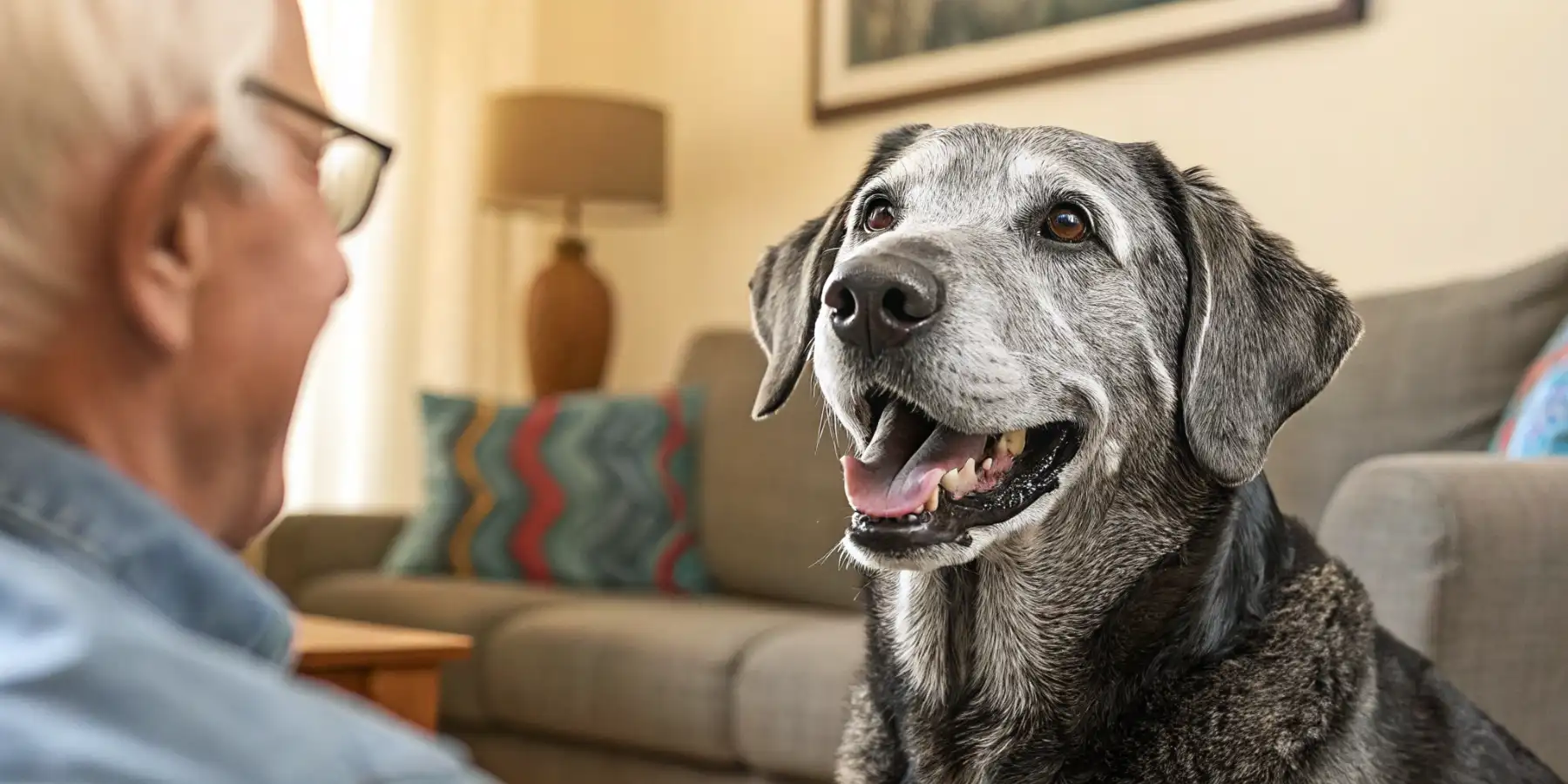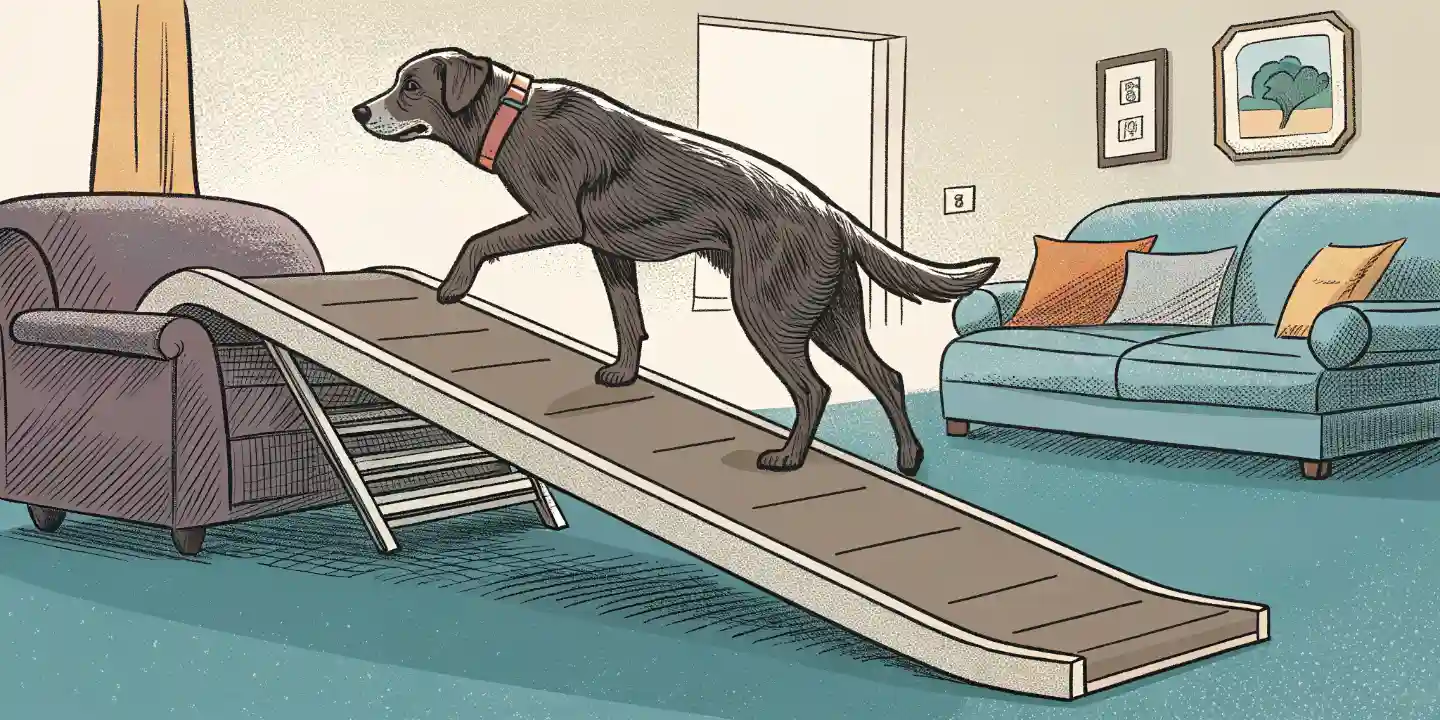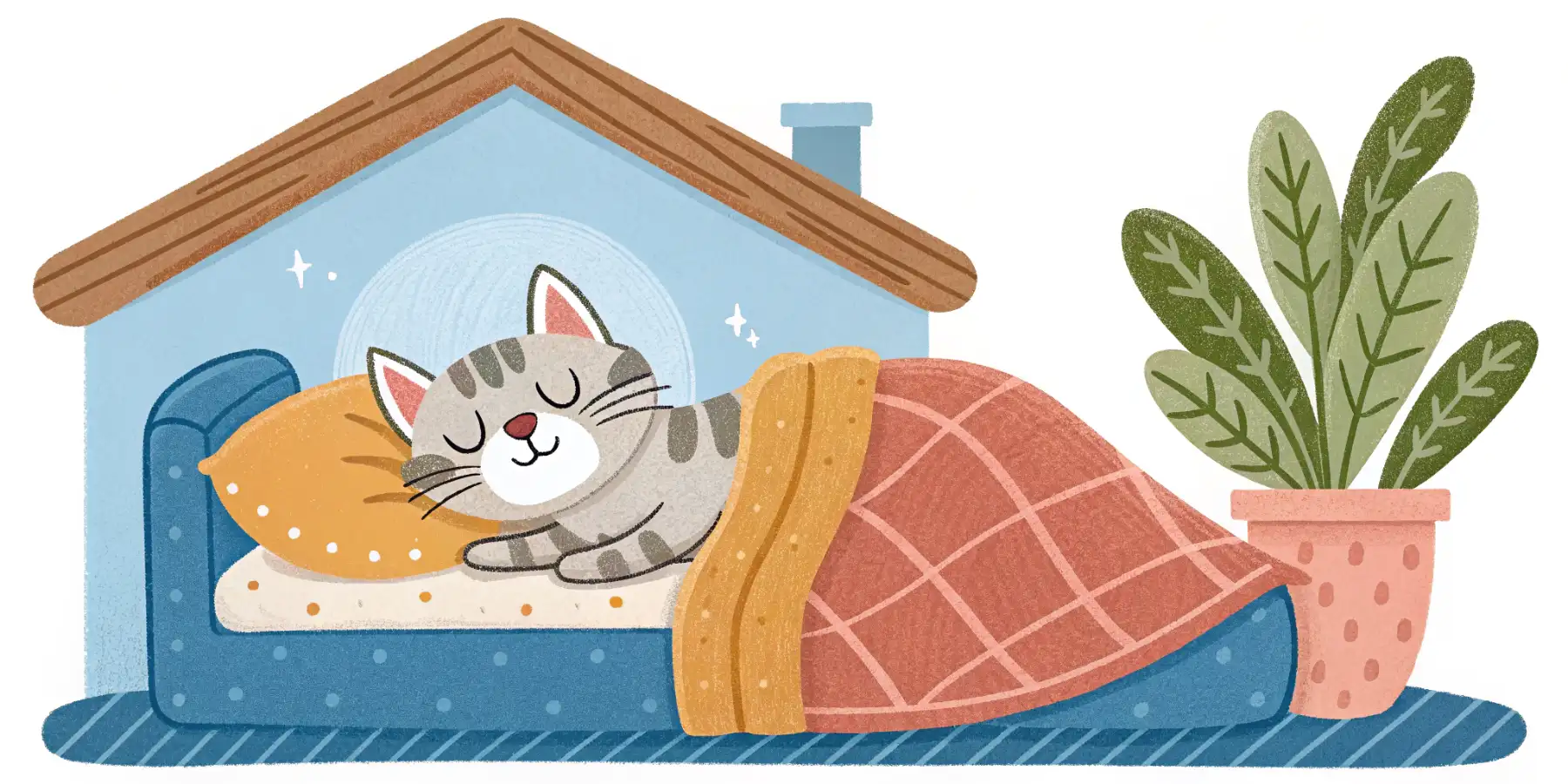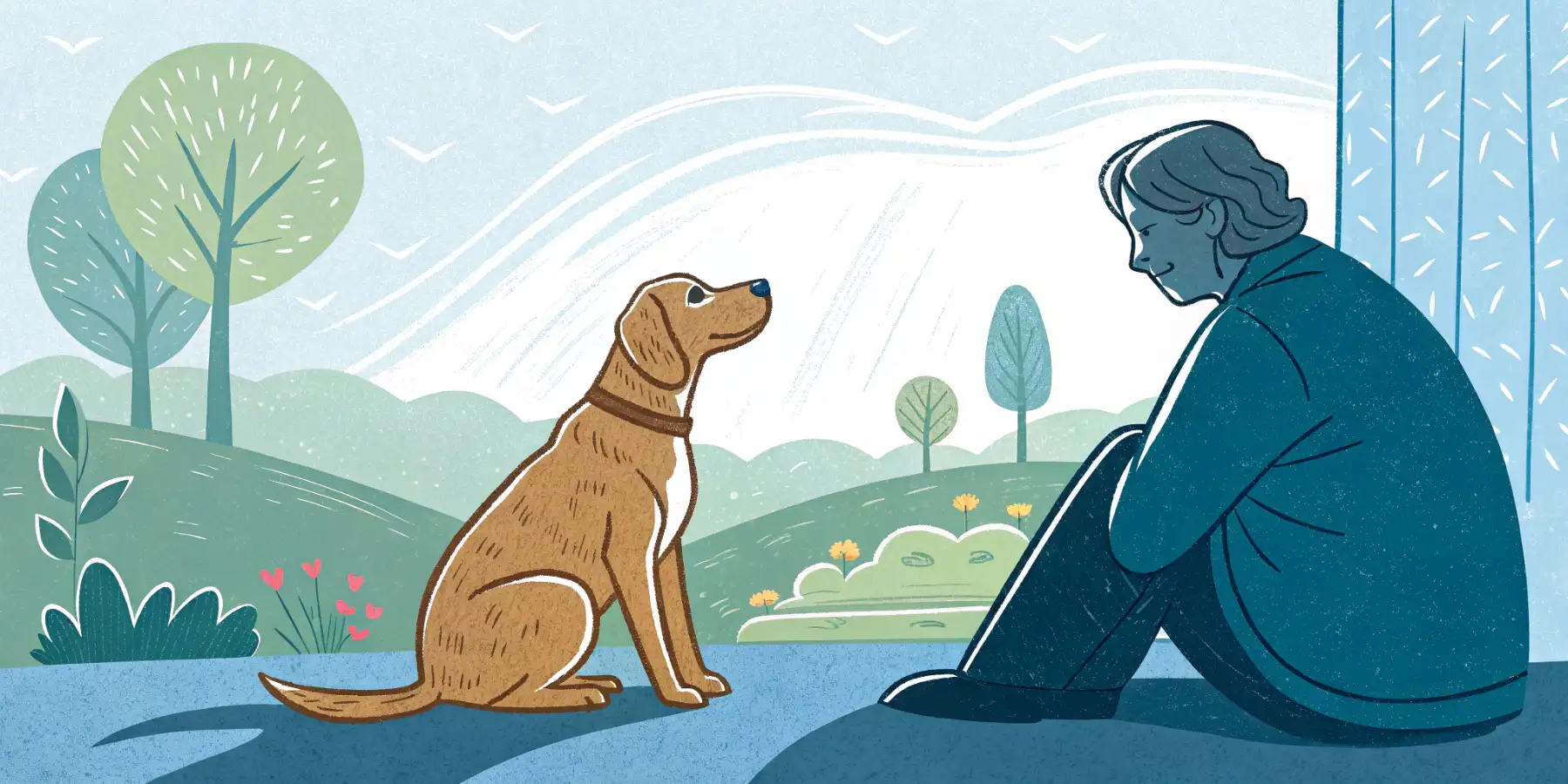
Senior Dog Care: Is Your Best Friend Happy?
Is your senior dog happy? Learn how to assess their quality of life & ensure comfortable senior dog care. Click for tips!
Quality of Life Considerations: Assessing Your Senior Dog’s Well-being
As our canine companions enter their golden years, their needs change, and it becomes increasingly important to focus on their quality of life. It’s a topic that can be difficult, filled with emotion, but it’s crucial for ensuring our furry friends live their senior years with comfort and dignity. This isn’t just about keeping them alive; it’s about making sure they’re living and enjoying their remaining time with us.
 Caption: A senior dog enjoys a peaceful nap, highlighting the importance of comfort in their later years.
Caption: A senior dog enjoys a peaceful nap, highlighting the importance of comfort in their later years.
Understanding What “Quality of Life” Means for Your Dog
“Quality of life” is a subjective concept, but for our dogs, it boils down to a few key areas:
- Comfort: Are they free from pain and discomfort?
- Mobility: Can they move around with reasonable ease?
- Appetite and Hydration: Are they eating and drinking enough?
- Hygiene: Can they maintain reasonable cleanliness, or can you help them?
- Mental Well-being: Are they still engaged and enjoying life?
It’s not about perfection in any one area. It’s about the balance of these factors and whether your dog is generally happy and comfortable. Evaluating a senior dog’s quality of life requires honest and objective observation.
Identifying Signs of Declining Quality of Life
Sometimes, the signs are obvious, like a limp that worsens over time or a persistent cough. Other times, they’re more subtle. Look for these indicators:
- Decreased Appetite: A sudden or gradual loss of interest in food.
- Lethargy: Sleeping more than usual and showing less interest in activities. Consider this carefully, as senior dogs do naturally sleep more, but excessive lethargy can be a sign.
- Difficulty Moving: Stiffness, limping, struggling to get up, or reluctance to go for walks.
- Incontinence: Accidents in the house, which can be a sign of underlying health issues.
- Changes in Behavior: Irritability, anxiety, confusion, or withdrawal.
- Persistent Pain: Whining, panting excessively, or reluctance to be touched. Learn to recognize subtle signs of pain in your dog, such as a change in facial expression or posture.
- Social Withdrawal: Loss of interest in playing or interacting with family members.
It’s important to track these changes over time. A single bad day doesn’t necessarily mean a decline in quality of life, but a pattern of decline should be addressed. Start a journal to record your observations.
Using a Quality of Life Scale
There are several “quality of life scales” available online that can help you objectively assess your dog’s well-being. These scales typically involve assigning numerical values to different aspects of your dog’s life, such as pain level, mobility, and appetite. This can be a helpful tool for tracking changes over time and making informed decisions about your dog’s care.
 Caption: A veterinarian examines a senior dog, emphasizing the importance of regular check-ups.
Caption: A veterinarian examines a senior dog, emphasizing the importance of regular check-ups.
Working With Your Veterinarian
Your veterinarian is your best resource for assessing your senior dog’s quality of life. Schedule regular check-ups and be honest about your observations. Your vet can perform a thorough physical exam, run diagnostic tests to identify underlying health issues, and recommend appropriate treatment options. They can also help you interpret quality of life scales and make informed decisions about your dog’s care. Don’t hesitate to ask questions and voice your concerns. A good veterinarian will listen to your concerns and work with you to develop a plan that is best for your dog. Discuss options for managing chronic pain in senior dogs and the potential benefits and risks of different treatments.
Pain Management: A Crucial Aspect
Pain is a major factor affecting quality of life. If your dog is in pain, it’s essential to manage it effectively. Your vet may recommend medications like NSAIDs or other pain relievers. In addition, there are several non-pharmacological options that can help, such as:
- Acupuncture: Can help relieve pain and improve mobility.
- Massage Therapy: Can help relax muscles and reduce pain.
- Hydrotherapy: Exercising in water can be gentle on joints and muscles.
- Joint Supplements: Such as glucosamine and chondroitin, can help support joint health.
- Laser Therapy: Can reduce inflammation and promote healing.
In my experience, a multimodal approach, combining medication with alternative therapies, often yields the best results for improving mobility for senior dogs.
Making Adjustments for Senior Dogs
As your dog ages, you may need to make some adjustments to their environment and routine to improve their comfort and safety.
- Provide Comfortable Bedding: A soft, supportive bed can help alleviate pressure on joints. Orthopedic beds are a great option.
- Elevated Food and Water Bowls: Can make it easier for dogs with mobility issues to eat and drink.
- Ramps or Stairs: Can help dogs get on and off furniture or navigate stairs.
- Non-Slip Flooring: Can prevent slips and falls.
- More Frequent Potty Breaks: Senior dogs may need to go outside more often.
- Shorter, More Frequent Walks: Adjust your walking routine to accommodate your dog’s changing abilities.
 Caption: A senior dog uses a ramp to access a couch, illustrating modifications that improve accessibility.
Caption: A senior dog uses a ramp to access a couch, illustrating modifications that improve accessibility.
End-of-Life Decisions: A Difficult but Loving Choice
The hardest part of caring for a senior dog is making end-of-life decisions. It’s a deeply personal choice, and there’s no right or wrong answer. I believe that the most important thing is to prioritize your dog’s comfort and well-being.
Consider these questions:
- Is your dog still able to enjoy life?
- Are they in constant pain that cannot be managed?
- Are they able to eat and drink?
- Are they able to interact with you and their environment?
If the answer to these questions is consistently “no,” it may be time to consider euthanasia. It’s a difficult decision, but it can be the most compassionate thing you can do for your beloved companion. Talk to your veterinarian about your options and make a decision that you feel is best for your dog. Remember that grief is a natural part of this process, and it’s okay to seek support from friends, family, or a pet loss support group.
Celebrating Their Life
Even as your dog’s health declines, focus on cherishing the time you have left. Continue to provide them with love, comfort, and enrichment. A gentle massage, a favorite treat, or a quiet cuddle can make a big difference in their day. Take lots of pictures and videos to remember all the good times you shared. Remember, focusing on your dog’s quality of life in their final days is the ultimate act of love.


